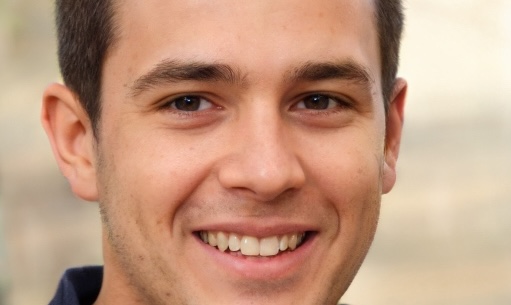
April 1st, 2025
Explora Articles The Good Employee Paradigm: an Inertia of Centuries
December 1, 2016 9 min
Business leaders, along with many employees, need to question their beliefs about the qualities a good employee needs to possess.


Obedience, diligence and expertise can no longer be the attributes that define a good employee in the digital era. Companies need to be made of a different breed of professionals, armed with a different set of capacities, if they aspire to achieve success in an economy of knowledge and creativity. But first, business leaders, along with many employees, need to question their beliefs about the qualities a good employee needs to possess. And to do that they need to break with a well-established paradigm which has delivered good results up to very recent times.
We can roll back the origin of our beliefs of what makes a good employee to the idea, prevalent in many ancient civilisations, that work is a divine punishment. In those civilisations most of the work was relegated to a caste of slaves who made up the lowest layer of society. And, as Lucio Columella explained in his book De Re Rustica, the qualities masters sought in those slaves were just two: loyalty and obedience. That was all.
In the Middle Ages servants replaced slaves as the dominant workforce. Servants had a little more freedom than slaves, but basically there were no big differences in what their masters expected from them. In parallel a class of artisans and merchants emerged in towns and villages. Labourers were expected to be obedient not only to their masters but also to the law of God. In this regard, the Rule of St. Benedict represented a significant milestone. Based on the conviction that “Idleness is the enemy of the soul”, this norm imposed the obligation to allocate certain hours of manual labor to the monks of the Benedictine order. A view that contrasted with the prevailing belief in classical Greece that contemplation led to wisdom. These were also the years in which John of Freiburg wrote his Summa Confessorum, a book that guided confessors on the most common sins of each profession.
In the Renaissance a new technology disrupted the world: the movable type printing. Knowledge could now be spread much faster and was no longer the sole domain of a privileged elite. Among other things, Gutenberg’s invention facilitated the translation of the Bible into common vernacular and was a leading cause of the Protestant Reformation, a school of thought which significantly influenced the attributes of a good employee in the following centuries. Among Protestant thinkers, John Calvin put a particular emphasis on the so-called “economic virtues”. For Calvin, work was a good thing not because it turned us away from sin, but because work was in itself a way of salvation. In his view, one must strive to succeed in the work he has been called by God because it is a way of honouring him, and a visible sign of being a member of the elect. Puritans fleeing from England took this vision to America, where it was elaborated on and amplified by intellectuals such Benjamin Franklin. Their idea that any hardworking person can achieve success remains at the root of the American business culture.
The following contribution to the makeup of the ideal good employee is Adam Smith’s idea of the division of labor. Smith concluded that if work is broken down into simpler tasks, and workers become specialised in each of those tasks, a company can obtain significant advantages: firstly, capital is saved as each worker doesn’t need to have many different tools to perform a variety of functions. It also saves time, since it is not necessary to constantly switch tools. Secondly, jobs are easier to learn, the risk of errors is smaller, and tasks can be performed by less qualified people. However, in many factories workers developed such a unique knowledge of his work that made them indispensable and often they were the ones who determined the pace of production. That phenomenon motivated Frederick W. Taylor, father of scientific management, to develop a methodology of work organisation so that virtually anyone could perform any task with the maximum efficiency. Some years later Henry Ford introduced the production chain, and workers had no choice but to adapt their pace to that of the assembly lines. The ideal employee was loyal, obedient, virtuous, and efficient, and then, under that new system, also replaceable…
In the interwar period scholars started to debate about the importance of workers being motivated. It was in those years that the Hawthorne experiments explored the influence of environmental factors in worker productivity, and when Elton Mayo concluded that workers’ productivity depended on them being treated humanely, and their level of satisfaction upon their interpersonal relationships in the workplace. Just a few years later Abraham Maslow published his famous pyramid, through which he tried to convey the complexity of human motivation.
After World War II it was the turn for Total Quality Management. Joseph Juran emphasised the idea of self-control as one of the pillars of quality assurance. However, to have self-control an operator needed to know what he was expected to do, and if he was doing what he should be doing. He also needed to be able to change what he was doing if that was not what he should be doing. Almost in parallel Peter Drucker brought us his Management-By-Objectives method and the idea of “empowerment”. The profile of a good employee gradually evolved towards a results-oriented person who was capable of administering a certain degree of autonomy within which he could take decisions to achieve the goals he previously had negotiated (sic) with his boss.
Finally, in the last decades of the last century we witnessed an explosion of gurus, business schools, MBAs, consulting firms, and airport paperbacks. Companies began to give importance not only to what employees knew and did, and how they behaved in the workplace, but also to their private sphere. Larger companies wanted corporate citizens who shared the same values, socialised with peers, and even looked alike. Teamwork, leadership, performance appraisals, career planning, and talent management become buzzwords during those years, and the profile of a “good employee” become a multifaceted one.
That’s in summary how over centuries we drown the sketch of the ideal employee we have in our minds today. Layer by layer, but at an exponential rate, so we unconsciously give more importance to those attributes that have been part of the concept for a longer time. For that reason, although the ideal of a “good employee” has evolved over time to become more multifaceted, in practice many managers and workers still keep in their minds an ideal that is not too far from the one represented by Alexey Stakhanov, a miner who was elevated to the condition of hero of the Soviet Union for his productivity digging coal.
Did you like it?
Are you already a user? Log in here